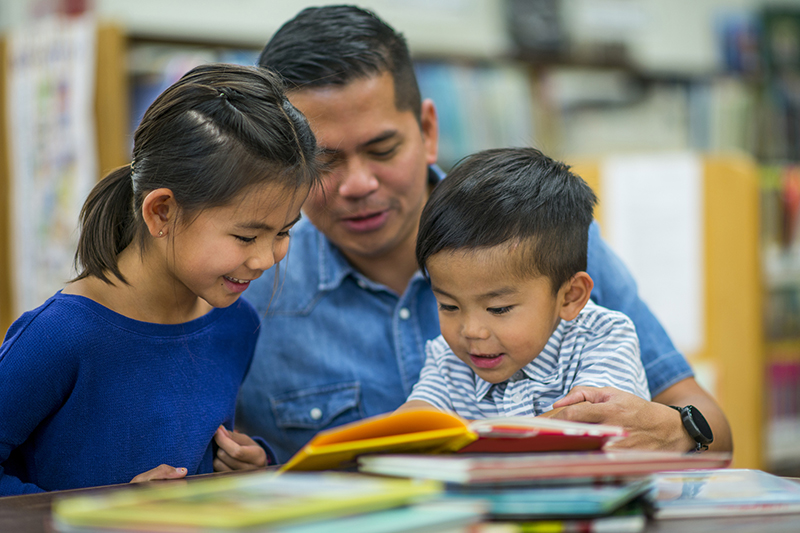Families For Life | Storytelling: Language and Literacy

Language development is a lifelong process but for your five or six-year-old, this is the period where linguistic mastery rapidly improves and there are plenty of things parents can do to support this process.
One way is to incorporate storytelling into your daily or weekly routine with your pre-schooler. Ms Suzannah Chua, early childhood educator, loves using storytelling sessions to incorporate language lessons at a private pre-school in Singapore.
“Storytelling develops children's language in so many ways,” she says.
For one, storytelling will build your child’s vocabulary, teach him how to use words in the right context, and help boost his pronunciation and grammar skills.
“It also helps your child to put abstract concepts into words,” adds Ms Chua.
“For example, the text of a story about a child who is afraid of the dark would have key phrases that could express ideas or emotions a child might not have the words to express. Reading those phrases often helps the child internalise the language and make it a part of their speech and thought.”
When reading to or with your child, a great way to facilitate development is to turn what could be a passive listening session into a more interactive time. Telling a story isn’t like watching television or listening to the radio, after all.
“Ask questions. Discuss the story with them. Relate it to your child's life — that adds meaning to the story and helps children to connect with the story on a personal level,” she advises.
“Also, another tip is to repeat the story often. The first time you read a story to a child, you're only communicating the plot of the story. As you read it again and again, the child picks up details and develops insights. Let your imagination run wild with ‘what if’ discussions. What if the main character had chosen a different course of action? What do you think it would have happened?”
What books should I read to my child?
It doesn’t really matter what your child reads, what matters is that he gets a wide variety to choose from. At the pre-schooler level, a good choice would be picture books or even wordless books as they really encourage discussion and provide ample opportunities to build up your child’s vocabulary and general knowledge.
Ms Chua suggests starting with the tried and tested children’s authors. She recommends Eric Carle, Julia Donaldson, Shel Silverstein, Dr Seuss, Maurice Sendak, Kevin Henkes, Leon Lionni, Mo Willems, to name a few. “Expose them to classics as well,” she adds. Think Heidi, The Gingerbread Man, as well as the Hans Christian Anderson stories.
“I am an advocate of giving your child a lot of exposure to a great variety of books, but I do recommend that you focus on books by good authors. Cut down on the run of the mill variety of stories. Good authors have been tried by early childhood educators and found excellent. Their books are often full of rhymes, imagination, symbolism and solid language,” says Ms Chua.
How to make story time more fun
- Start early – the best way to get into the reading habit is to start when your child is an infant. Board or fabric books work best!
- Make the time. Storytime doesn’t always have to be done right at bedtime – find what works for your schedule and stick to it.
- Use the library! Singapore’s public libraries are a treat for young kids. Get them their own library card and turn them loose.
- Missed out on a book when you were young? Add it to the reading list now. This way, both you and your child get to enjoy something new.
- Take turns. Let your child read alternate pages to you, instead of you reading to him. This way, he gets to build up his pronunciation skills and gain confidence in reading aloud.
Activity: Get interactive during story time
Stuck for ways to make a story more interactive?
“A simple key I use is to relate it to the child (ask you questions) and use the five W and one H (why, who, what, where, when, how),” advises Ms Chua. Some of the questions that she finds useful for drawing out a “thinking” response include:
- What do you think he meant by _____?
- Why do you think he did that?
- What would you have done?
- How do you think he could have done this?
Try asking a few of these questions the next time you and your child read together!
Explore more
Contributed by:
Early Childhood Development Agency